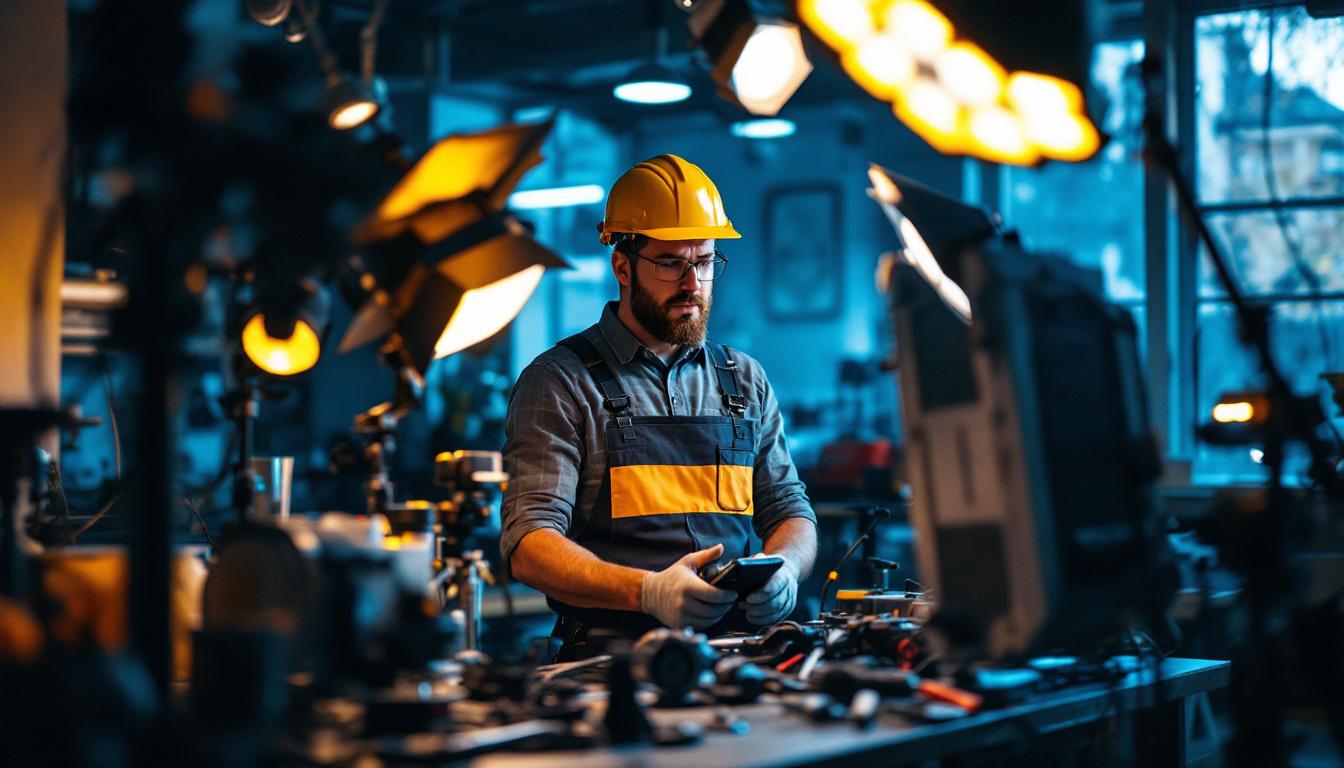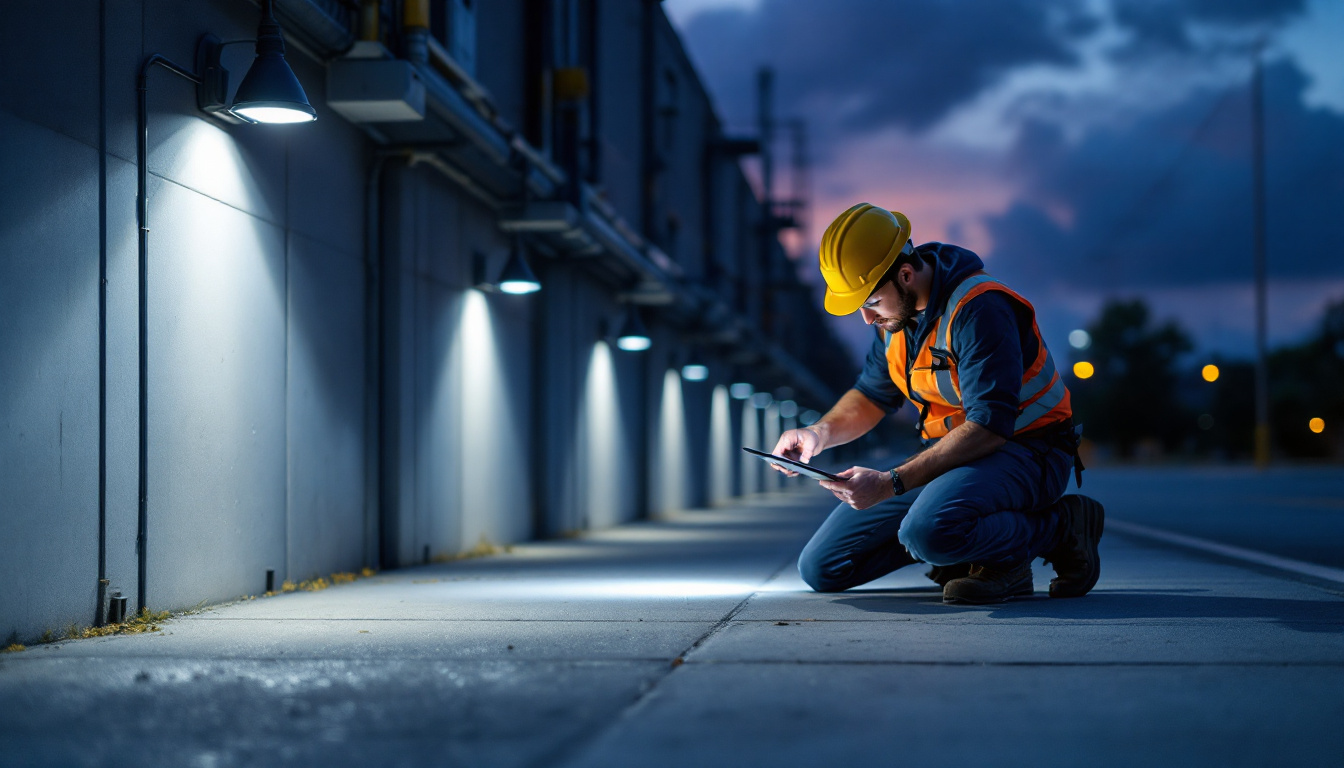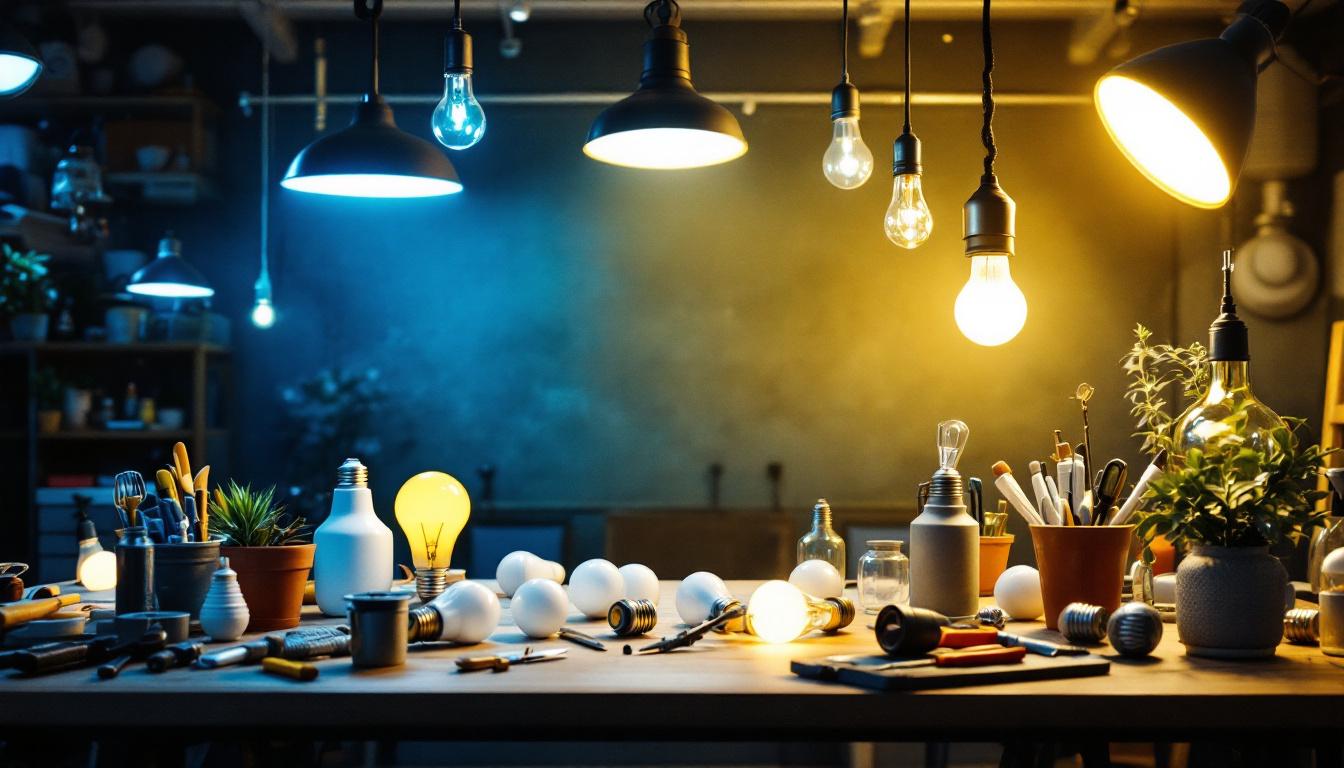
In the rapidly evolving world of lighting technology, contractors must stay informed about the latest advancements to provide the best solutions for their clients. This article delves into key aspects of light technology, covering everything from types of lighting to energy efficiency, smart lighting systems, and future trends. Understanding these elements will empower lighting contractors to make informed decisions and enhance their service offerings.
Lighting technology encompasses a variety of types, each with unique characteristics and applications. Familiarity with these types is crucial for lighting contractors to recommend the most suitable options for their clients.
Incandescent bulbs have been a staple in the lighting industry for decades. They produce light through a filament heated to a high temperature, emitting a warm glow. While they are inexpensive and provide excellent color rendering, their energy efficiency is low compared to newer technologies.
Contractors should be aware that incandescent bulbs have a shorter lifespan and consume more energy, leading to higher electricity bills for clients. As energy efficiency becomes a priority, many clients are opting for alternatives. Additionally, the warm light of incandescent bulbs creates a cozy atmosphere, making them a popular choice for residential spaces like living rooms and bedrooms. However, as energy regulations tighten, the availability of these bulbs is decreasing, prompting a shift in consumer preferences toward more sustainable options.
Light Emitting Diodes (LEDs) have revolutionized the lighting industry with their exceptional energy efficiency and longevity. LEDs consume significantly less power than incandescent bulbs and can last up to 25 times longer. This makes them an attractive option for both residential and commercial applications.
Moreover, LEDs are available in various colors and can be dimmed, providing versatility in design. Contractors should emphasize the long-term savings and environmental benefits of LED lighting when discussing options with clients. The adaptability of LEDs also extends to smart lighting systems, which can be controlled via smartphones or home automation systems, allowing for customized lighting experiences. This technological integration not only enhances convenience but also contributes to energy savings by enabling users to adjust lighting based on their needs and preferences.
Compact Fluorescent Lamps (CFLs) and halogen bulbs represent other alternatives in the lighting market. CFLs are more energy-efficient than incandescent bulbs but less efficient than LEDs. They are ideal for clients looking for a balance between cost and efficiency.
Halogen bulbs, a type of incandescent lighting, offer improved efficiency and a brighter light output. However, they can generate significant heat, which may not be suitable for all applications. Understanding the pros and cons of each type allows contractors to tailor their recommendations effectively. Furthermore, CFLs have a longer warm-up time compared to incandescent bulbs, which may be a consideration for clients who prioritize immediate brightness. On the other hand, halogen bulbs are often favored in situations where high-quality light is essential, such as in art galleries or retail spaces, where color accuracy is paramount. By discussing these nuances, contractors can better guide their clients toward the lighting solutions that best meet their specific needs and preferences.
As energy costs continue to rise and environmental concerns become more pressing, energy efficiency in lighting has gained paramount importance. Lighting contractors play a crucial role in guiding clients towards energy-efficient solutions. With advancements in technology, the options available for energy-efficient lighting have expanded significantly, providing contractors with a variety of tools to meet their clients’ needs while promoting sustainability.
Energy ratings, such as the ENERGY STAR label, help consumers identify efficient products. Contractors should familiarize themselves with these ratings to provide clients with reliable information. Products bearing the ENERGY STAR label meet strict energy efficiency guidelines set by the Environmental Protection Agency. In addition to ENERGY STAR, there are other certifications like the Lighting Facts label, which provides information on the lumens per watt, color accuracy, and lifespan of lighting products, enabling contractors to make well-informed recommendations.
By recommending energy-efficient lighting options, contractors can help clients reduce their carbon footprint and save on energy costs. This not only benefits the environment but also enhances the contractor’s reputation as a knowledgeable and responsible professional. Furthermore, many states and local governments offer incentives for adopting energy-efficient technologies, which can provide additional financial benefits for clients and create opportunities for contractors to engage in discussions about sustainability and cost savings.
Contractors can implement various strategies to enhance energy efficiency in lighting installations. This includes recommending LED retrofits, utilizing lighting controls, and optimizing fixture placement. By conducting energy audits, contractors can identify areas for improvement and propose tailored solutions. For instance, the use of smart lighting systems that adjust based on occupancy or daylight availability can significantly reduce energy consumption, making them a valuable recommendation for both residential and commercial clients.
Additionally, educating clients about the benefits of energy-efficient lighting can lead to more informed decisions. Highlighting potential savings on electricity bills and the positive impact on the environment can encourage clients to invest in energy-efficient solutions. Providing case studies or examples of previous projects where energy-efficient lighting led to substantial savings can further motivate clients. Moreover, discussing the long-term benefits, such as reduced maintenance costs and improved lighting quality, can help clients appreciate the value of making the switch to energy-efficient options.
Smart lighting technology is transforming the way lighting systems are designed and operated. These systems offer enhanced control, convenience, and energy savings, making them increasingly popular among clients. With the rapid advancement of technology, smart lighting is not just a trend but a sustainable solution that aligns with modern living and environmental consciousness.
Smart lighting systems allow users to control their lighting remotely through smartphones or voice-activated devices. This convenience can significantly enhance the user experience. Moreover, these systems can be programmed to adjust based on occupancy, time of day, or natural light levels, further optimizing energy use. For instance, lights can automatically dim when a room is unoccupied or brighten gradually in the morning to simulate a natural sunrise, promoting a healthier lifestyle.
For contractors, understanding the benefits of smart lighting can open new opportunities for installations and upgrades. Clients are often willing to invest in smart technology for the added convenience and efficiency it provides. Additionally, smart lighting can contribute to increased property value, as homes equipped with modern technologies tend to attract more buyers who prioritize energy efficiency and smart home capabilities.
Smart lighting can be seamlessly integrated with other home automation systems, creating a cohesive and user-friendly environment. Contractors should be knowledgeable about compatibility with various platforms, such as Google Home or Amazon Alexa, to provide clients with tailored solutions. This integration allows for scenarios where lights can be programmed to turn on when the security system is disarmed or to adjust automatically when the thermostat changes, enhancing the overall comfort and security of the home.
By offering smart lighting options, contractors can position themselves as forward-thinking professionals who embrace the latest technology trends. This not only enhances their service offerings but also attracts tech-savvy clients looking for modern solutions. Furthermore, as energy regulations become stricter and consumers become more environmentally conscious, the demand for smart lighting solutions is expected to grow, making it a lucrative area for contractors to explore. By staying informed about the latest advancements and trends in smart lighting, contractors can ensure they remain competitive in an evolving market.
The lighting industry is continuously evolving, with new technologies and trends emerging regularly. Staying updated on these trends is essential for contractors looking to remain competitive in the market.
Human-centric lighting focuses on the impact of light on human health and well-being. This approach considers factors such as color temperature and intensity, aiming to create environments that enhance mood, productivity, and overall health.
Contractors should educate clients about the benefits of human-centric lighting, especially in settings like offices, schools, and healthcare facilities. By incorporating this knowledge into their designs, contractors can create spaces that promote well-being and comfort.
As LED technology continues to advance, new possibilities for lighting design emerge. Innovations include tunable white LEDs, which allow users to adjust color temperature according to their preferences or needs. This flexibility can enhance the functionality of spaces, making them more adaptable to various activities.
Contractors should stay informed about these advancements to offer cutting-edge solutions to their clients. By keeping abreast of the latest developments, they can ensure their recommendations are relevant and beneficial.
To thrive in the competitive lighting industry, contractors should adopt best practices that enhance their service quality and client satisfaction. These practices encompass various aspects of the business, from communication to installation techniques.
Clear and effective communication is essential for successful project execution. Contractors should take the time to understand their clients’ needs, preferences, and budget constraints. This understanding allows for tailored recommendations that align with client expectations.
Regular updates throughout the project lifecycle can also foster trust and transparency. Clients appreciate being informed about progress, challenges, and any changes that may arise during the installation process.
The lighting industry is governed by various standards and regulations, which can change over time. Contractors should stay informed about these standards to ensure compliance and deliver high-quality installations. This includes understanding local building codes, safety regulations, and energy efficiency guidelines.
Participating in industry training and certification programs can further enhance a contractor’s knowledge and skills. This commitment to ongoing education demonstrates professionalism and dedication to providing top-notch service.
As the lighting industry continues to evolve, lighting contractors must adapt to new technologies, trends, and client expectations. By understanding different types of lighting, emphasizing energy efficiency, embracing smart technology, and staying informed about future trends, contractors can position themselves as knowledgeable professionals in the field.
Implementing best practices in communication and staying updated on industry standards will further enhance their service offerings. Ultimately, a commitment to quality and innovation will ensure that lighting contractors remain competitive and successful in this dynamic industry.
Ready to elevate your lighting game? Look no further than LumenWholesale for all your lighting needs. Our extensive selection of top-quality, spec-grade lighting products is designed to meet the highest industry standards, ensuring you deliver exceptional results for every project. With unbeatable wholesale prices and the convenience of free shipping on bulk orders, you can trust LumenWholesale to provide the perfect blend of quality, affordability, and convenience. Don’t let inflated markups dim your potential—choose LumenWholesale and experience the best value in lighting today. Discover our range and take advantage of our incredible offerings by visiting Wholesale Lighting at the Best Value.

Discover the pitfalls lighting contractors often encounter with industrial outdoor lighting projects.

Discover the common pitfalls lighting contractors face when determining the number of fixtures needed for warehouse spaces.

Discover the latest strategies and proven techniques for lighting contractors to effectively utilize Type T LED lamps.

Discover the ultimate guide to 4 light bulbs for lighting contractors, with expert tips, key benefits, and industry insights to enhance your projects—download now!.